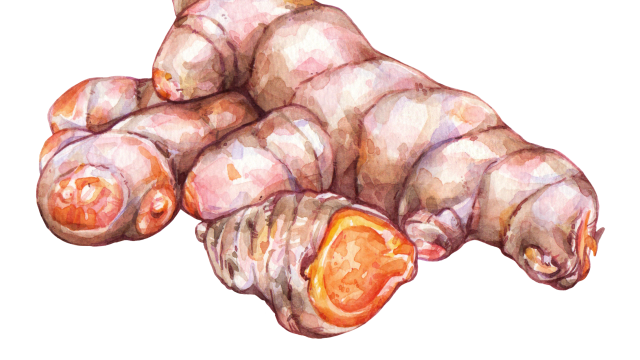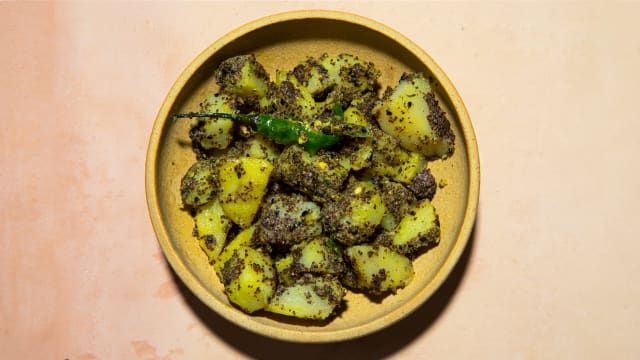Q&A with Maunika Gowardhan

Wherever you go in India, the best way to understand a region’s cuisine is by eating a local thali, loaded with an assortment of flavorful dishes. Mumbai-born Maunika Gowardhan believes these platters are the best way to offer a balanced meal. Her latest book Thali: A Joyful Celebration of Indian Home Cooking introduces many of India’s regional cuisines and their nutritional elements through this format.
Gowardhan, who has lived in the UK for two decades, is deeply fascinated by Indian home cooking and the mind-boggling varieties of spice blends and flavors found across the country. Her first book Indian Kitchen: Secrets of Indian Home Cooking is an introduction to the variety of Indian cuisines, from practical quick meals for the family, to slow-cooked dishes and celebratory meals.
With Thali, Gowardhan illustrates how thalis are not just a way to discover a new cuisine while dining out, but also square meals that can be put together at home to balance nutrition and contentment. Pairing different regional recipes, Gowardhan celebrates the geographical contexts and local flavors of India’s enduring thali tradition.
Roundglass Food: How would you describe a thali?
Maunika Gowardhan: Thali is a metaphor for life with myriad flavors, textures and colors that come together on a single large platter. The key is always to eat a balanced meal, which includes stir-fries, gravy dishes, crispy snacks, flatbreads, pickles, and raitas [yogurt-based dishes].
RG Food: What are the key factors to keep in mind while building a thali at home?
MG: Essentially, for any meal I always try to keep in mind how much time I have on that day, and also the food budget. If it’s midweek: a simple thali of dal, roti, some vegetables and plain dahi. I always batch cook on weekends, so there is always dal in my freezer. Even on busy days just a tadka [spices tempered in oil] over leftover dal lifts the flavor up. If I’m cooking an elaborate weekend feast for family and friends, I would pick one dish from each of the chapters in Thali.
RG Food: What are the wellness and nutritional aspects to a thali-style meal?
MG: When we talk about balance, it’s about keeping in mind the vegetables, grains and fiber that’s included in our meal. A thali offers that, alongside dairy, protein in the form of lentils or meat, as well as pickles. One of my favorite recipes from the book is my turmeric and ginger pickle. Adding turmeric to your diet is key and, once pickled, seasonal fresh turmeric lasts for months.
RG Food: What is your favorite ingredient?
MG: Chiles. I love fresh green chiles in recipes but also a vibrant smoky chili powder is a game changer in recipes.
RG Food: What’s a meal that you associate with wellbeing?
MG: Khichdi; a lentil and dalia dish flavored with turmeric, ginger and curry leaves. It’s wholesome and even better cooked in ghee.
RG Food: What’s something you always bring to the table?
MG: A pot of pulao, which is perfect to feed a crowd.
RG Food: What’s a mindful practice you follow while cooking or eating?
MG: A good playlist, which makes cooking a pleasure.
RG Food: If you could invite anyone over for dinner, who would you call and what would you serve them?
MG: My grandmothers. I would serve them a lamb curry, simple paratha, pulao, vegetable stir-fry and raita.
RG Food: What’s an herb (or elixir, or fruit, or tea) that you associate with healing?
MG: My gauti chai which is soothing and delicious. I add lemongrass and cardamom, which are subtle and refreshing.
RG Food: What favorites would you add to a pan-Indian vegetarian thali?
MG: Rajasthani gobi Rajwadi, Lucknowi chutneywale aloo, Andhra vankaya pulusu, Gujarati Surati dal, phulkas, plain dahi and Bengali tamatar ki chutney.
RG Food: What words of wisdom do you associate with food?
MG: Feeding friends and family with love.
RG Food: What aspect of cooking do you find relaxing?
MG: Frying spices and simmering curries.
Key Takeaways
- Gowardhan on valuing Indian thali nutrition.
- A thali balances Ayurvedic rasas.
- Indian thali is diverse and balanced.





